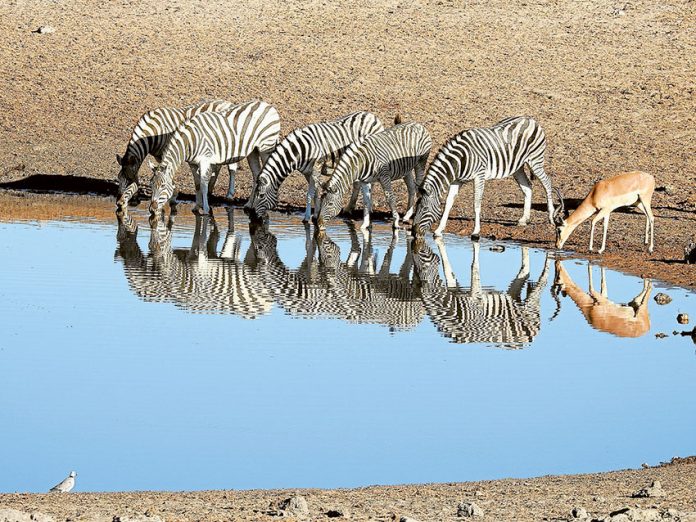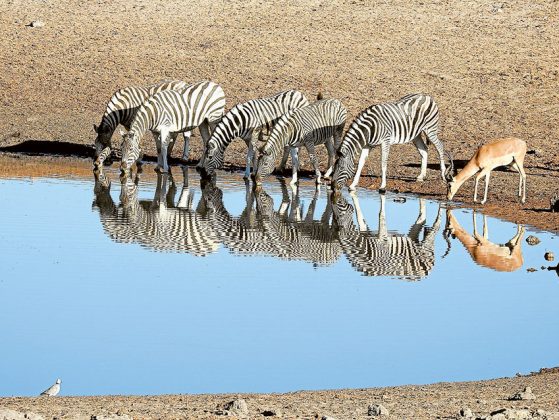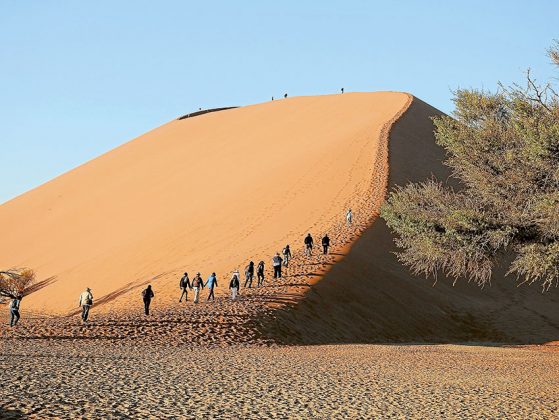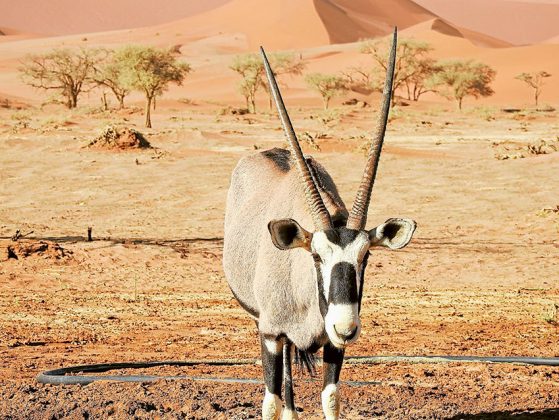
We are on safari in Africa. Over three weeks we will travel through three African countries looking for the big five, meeting the people, and learning about their history.
We have begun our journey in Namibia; this is a vast desert country but only has a population of two million. We have flown into the capital Windhoek; it’s a thriving city of 300,000 people and a stepping-off point for tourism. But once you leave the city’s boundaries, it’s a stark barren scrub that greets your eyes.
Rising up from this are huge mountain ranges with their own natural beauty. Due to the topography of the land, they had to build the airport 40 kilometres out of town to find the only flat land.
As you move along, you are greeted by a housing development seemingly in the middle of nowhere, then high electric fences denoting farms that are now game reserves offering tourists accommodation and a chance to go on game drives to hunt with their cameras the animals behind the fences.
Moving south, now we are headed for the Namib-Naukluft National Park. This is said to be the oldest desert in the world and this park is home to the world’s highest sand dunes.
Its 7am and we are parked in our 4×4 outside the national park along with about another hundred 4×4 vehicles waiting for the gates to open.
Some of the 4x4s are open tops, their occupants rugged up; it’s still dark and cold. For the open tops, it’s going to get a lot colder as we move through the early morning air. Luckily, our 4×4 is all enclosed with air con, way to go.
The sun starts to rise, the gates are open and off we go, heading for the dunes. As the sun touches the sand dunes, the reflection of the sun’s rays from the deep red sand makes the dunes seem to glow and the contrast from the bright face to the shadowed side makes a spectacular effect.
All the dunes have been numbered and today dune 45 is open to climbers; up they go! It’s easy at first but soon the incline becomes steep and many give up, many go on. To the observer at ground level, those on top look like ants zigzagging across the top of the dune; these are the highest in the world reaching heights of 300 metres.
Next we visit the Deadvlei; it was once a lake and river but over millions of years the shifting sands have strangled its flow of water, eventually drying it out together with the camel thorn acacias trees.
It’s a good walk through the lower levels of the dunes; people travel from around the world to see this dry lake that forms part of the history of the dunes.
You climb up a rise and there before you is the Deadvlei. The saltpan sparkles white in the hot sun and rising up to the sky are the camel thorn acacias. They were already 300 years old when their fate was sealed and they are now turning to stone and estimated to be over 800 years old; it was worth the sandy trek.
To be continued.
I would like to thank David Brown Travel Manager for arranging everything.
Until next time,
Safe Travel’n,
Geoff Vallance.








